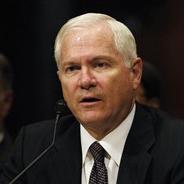The U.S. Army is slated to publish a new operations manual this month that equates achieving success in stability operations with winning offensive and defensive battles. The new Army manual is in line with Secretary of Defense Robert Gates' vision for military transformation. In a speech delivered last November at Kansas State University, Secretary Gates stressed the need to balance military force with political and economic resources in order to "integrate and apply all of the elements of national power to problems and challenges abroad." Gates added that the experience of recent years, as well as his decades of public service, had reaffirmed the wisdom of "strengthening our capacity to use 'soft' power and for better integrating it with 'hard' power." The emphasis of the new doctrine and the Secretary's speech on promoting economic development, good governance, and winning popular support in conflict regions represents a departure from the perspective of his predecessor, Donald Rumsfeld. Secretary Rumsfeld believed that advances in military technologies -- especially information processing -- and superior military tactics would allow the U.S. armed forces to overwhelm opponents, obviating the need for lengthy military occupations. As a result, U.S. military planners have tended to treat counterinsurgencies and post-conflict stabilization missions as lesser cases when determining where to allocate personnel and dollars.
Can the U.S. Military Sustain Focus on ‘Stability Operations’?

